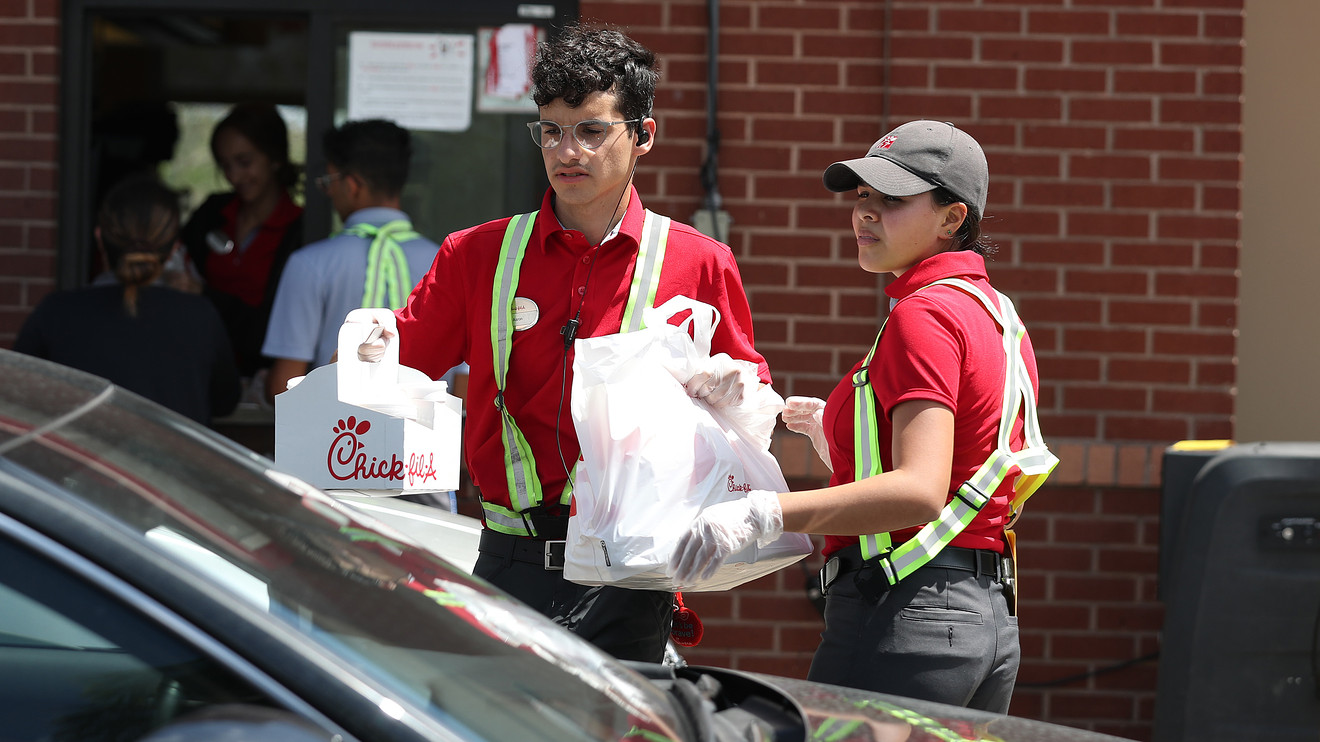
As the coronavirus tightens its grip on the U.S., many states have ordered restaurants to close for eat-in customers and switch to takeout only. But with the influx of deliveries, how safe is it to order food as we’re trying to halt the spread of a highly contagious illness?
There is no evidence that coronavirus is transmitted from food or food packaging, according to the Food and Drug Administration. Nor is there any indication that people have contracted coronavirus, from consuming food, said food-safety expert Benjamin Chapman, a professor at North Carolina State University.
The virus can live up to 24 hours on cardboard, according to a study in the New England Journal of Medicine.
“There is currently little scientific information about the survival of the COVID-19 (coronavirus) on the surface of open food,” the FDA said. “Work with similar viruses shows that some food surfaces don’t allow the virus to survive at all, but some do.”
The FDA also said there’s no risk in the virus traveling on food surfaces from overseas. “COVID-19 is not transmitted through food or ingredients. Even if surfaces or packaging have been contaminated, the virus will only survive on such surfaces for a short period, therefore there is no risk of contamination,” it said.
The virus can, however, live on surfaces. A study published last week in the New England Journal of Medicine found that SARS-CoV-2, the virus that causes COVID-19, was detectable for up to two to three days on plastic and stainless steel, up to 24 hours on cardboard, up to four hours on copper, and up to three hours in aerosols.
“The virus that causes COVID-19 has also been detected in the stool of certain people. So we currently cannot rule out the possibility of the infection being transmitted through food by an infected person who has not thoroughly washed their hands,” according to researchers at Harvard Medical School. “In the case of hot food, the virus would likely be killed by cooking. This may not be the case with uncooked foods like salads or sandwiches.”
“Wash your own hands after removing the packaging and before eating your food,” said Craig Hedberg, a University of Minnesota professor and expert on food-borne illnesses.
Delivery people should wear gloves but, assuming people touches their faces multiple times an hour, “if the delivery person was infected, the gloves are not likely to prevent contamination,” Hedberg added. Delivery people should also pay attention to what they’re touching while wearing gloves.
Last week, Instacart saw a 25% increase in “leave at my door” deliveries, a company spokeswoman said.
Several food delivery companies are encouraging customers to take advantage of contactless delivery options.
Instacart and Postmates offer a contactless delivery option which customer can select without having to craft a note. Last week, Instacart saw a 25% increase in “leave at my door” deliveries, a company spokeswoman said. In addition to ordering food deliveries for themselves, more than 40% of customers are placing orders on behalf of others.
Others like Uber Eats UBER, +14.26%, DoorDash and Grubhub GRUB, +15.67% encourage customers to contact their delivery person in advance with instructions to limit contact.
Grubhub drivers “can practice social distancing even if the customer didn’t opt-in,” CEO, Matt Maloney, told MarketWatch. “They could step back and text or call them on the phone and say, ‘I’m standing six feet away or I’ll stand here and wait for you but I don’t want to enter your home’.”
“From the drivers I’ve spoken to and reached out to, they’re taking this very seriously,” said Harry Campbell, founder of The Rideshare Guy site and a former Uber and Lyft driver. “Even in the very beginning stages of this, drivers were already practicing protective measures like wearing gloves, wiping everything down with Lysol RB, +2.70%, and doing as much ‘no contact’ delivery as possible.”
Chapman encourages people, especially those who are immuno-compromised, to take advantage of contactless delivery. “All they really have to worry about is what’s on the package, and we know that if they wash their hands before eating there’s a really low chance they can get the virus.”
“To the extent that every avoided interaction is one less opportunity for transmission,” contactless delivery is effective at helping contain the virus, Hedberg said. But one caveat to that is that people may not immediately eat food when it is delivered to them which means they can end up eating food that spoiled.
Instead of ordering food, many Americans have flocked to supermarkets to stock up on “pandemic pantry” essentials. Shopping for groceries is far cheaper, and poses a separate set of risks.
“The main issue is your exposure to others as you shop for the food you will be taking home,” Hedberg said. “In both cases, the principle is to reduce the potential for direct exposure to the virus from others by limiting your interactions with them.”
div > iframe { width: 100% !important; min-width: 300px; max-width: 800px; } ]]>






